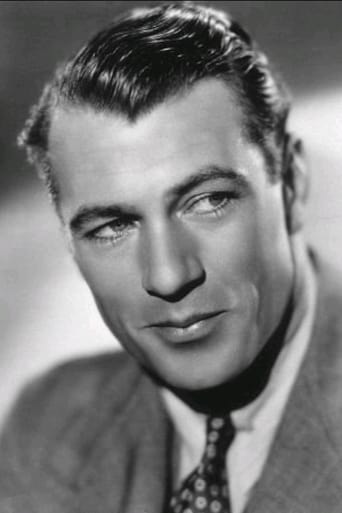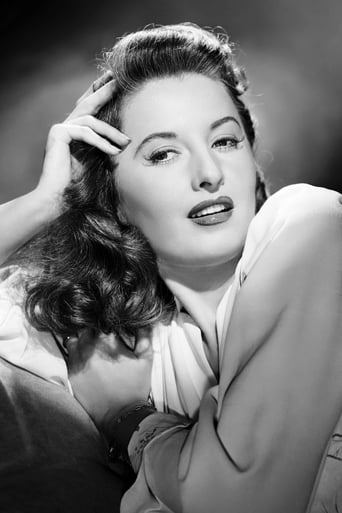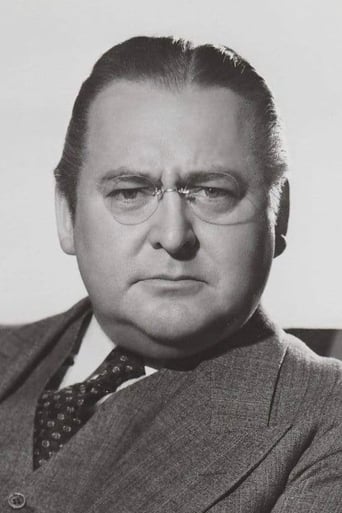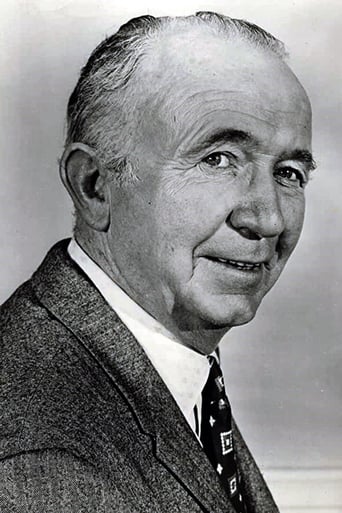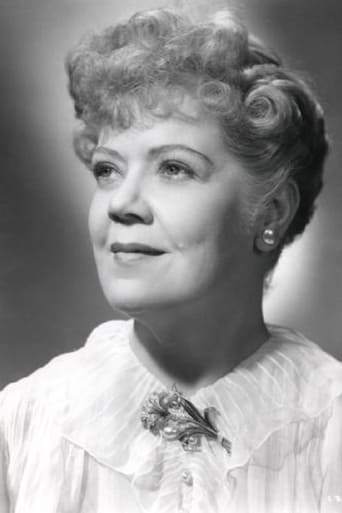FeistyUpper
If you don't like this, we can't be friends.
ChicRawIdol
A brilliant film that helped define a genre
AnhartLinkin
This story has more twists and turns than a second-rate soap opera.
JoeKulik
Although I find "Meet John Doe" as fascinating as I did the other 2 Capra films I've viewed, "Mr Smith Goes To Washington" and "It's A Wonderful Life", I was appalled by all the user reviews that I've found here praising it as somewhat "anti-Establishment", and "sending the Right message", and as being relevant to what's happening in America today.My attitude about Frank Capra changed recently when I discovered that he was the director of the little mentioned "Why We Fight" film series of WWII. As a Psychology student, I accidentally stumbled on the existence of these propaganda films when my personal research brought me to Carl Hovland, a long time professor of Psychology at Yale University. It was Hovland to whom the US Govt turned when it was decided that a "Why We Fight" propaganda film series was needed because he was one of the first serious researchers of "attitude change" & "persuasive communications". This film series was essentially engineered in a Social Psychology laboratory for maximum effectiveness in indoctrinating primarily fresh military recruits, but eventually the whole public as well about why our involvement in WWII was necessary, and "the right thing to do". It was Frank Capra to whom the Fed Govt turned when it wanted to bring Hovland's scientific research on manipulating "social attitudes" to bear upon manipulating the "social attitudes" of the entire USA about WWII.It is against this backdrop that I must now evaluate ALL of Capra's films of that era. In the context of his involvement in the "Why We Fight" propaganda films, I see "Meet John Doe", "Mr Smith Goes To Washington", & "It's A Wonderful Life" as hardly being much different than those WWII propaganda films. They were "feel good" films to trick the American public into thinking that they have control over their lives, their government, and their destinies while in reality they have none. Judging by many of the user reviews here of this film. I must conclude that Capra films like "Meet John Doe" have high propaganda value even today.Fandor.com has most of the Capra "Why We Fight" films available for online viewing. Just one $10 monthly subscription fee allows you to view all of them. joseph.kulik.919@gmail.com
donjeffries
"Meet John Doe" would be the finest movie ever made, in my opinion, except for the ending. Director Frank Capra filmed several different endings, and probably chose the best one, but ultimately found them all lacking in some way. I share his view, but even without a satisfying climax, "Meet John Doe" represents the motion picture industry at its absolute best. Gary Cooper is perfect as Long John Willoughby, a homeless ex-baseball pitcher with a bum arm. Walter Brennan turns in perhaps his greatest role, as "The Colonel," a grumpy fellow who calls people "Healots" and utters the memorable line, "I know the world's been shaved by a drunken barber." Barbara Stanwyck, as always, turns in a compelling performance. Capra invariably supplied his movies with a wealth of strong background characters, and "Meet John Doe" is no exception. Regis Toomey, at one time a leading man in the early talkies, is particularly good as Bert the Soda Jerk. The script sets up one of the most intriguing premises imaginable; reporter Stanwyck, in a bid to save her job and build circulation, invents a character, "John Doe," who threatens to jump off the roof of the highest building in town on Christmas Eve, if people don't start being nicer to each other. His column "I Protest," becomes so popular that the newspaper has to produce an actual "John Doe," and Cooper wins the part. Gradually, the naive, well meaning Cooper begins to believe in what "John Doe" is saying, and falls in love with Stanwyck, who has been co-opted by powerful forces, led by the dastardly Edward Arnold, playing the evil tycoon Norton. James Gleason is great here, as the drunken editor who tries to warn Cooper that Stanwyck is a phony. He's perfect for Capra's type of movie, so it's a surprise that this is the only one he ever appeared in. The drama in this film is everywhere; Cooper's affection for Stanwyck, whose hard boiled heart begins to melt, the burgeoning populist "John Doe" political movement, and the uncertain resolution to "John Doe's" dilemma. As it becomes obvious that people are not going to start treating each other better, the question becomes- will Cooper actually jump on Christmas Eve? Does he still believe in an ideology that Stanwyck created, for dishonest and cynical reasons? "Meet John Doe" features Capra's typical dark look at humanity, as exemplified by Stanwyck's deviousness, and the ugly mob mentality of the "John Doe" supporters as they turn on Cooper. However, again as always, Capra turns that pessimistic view into a fairy tale-like optimism, as Stanwyck comes to believe in Cooper and thus her own philosophy, and the mob realizes realizes the error of its ways. In Capra's films, no matter how extensive the corruption appears, justice always triumphs and the little guy always wins. Thus, it was predictable that Capra would choose the happiest ending possible, with Cooper being saved from jumping at the last minute, by an ill Stanwyck and the mob, represented by Toomis's soda jerk and his wife, as Gleason utters the line, "There you go, Norton- the people! Try and lick that!" I suppose there was really no adequate way to resolve a plot line like this, and Capra did the best he could. Regardless, "Meet John Doe" is head and shoulders above almost any other film Hollywood has ever produced.
jc-osms
It always seemed to me that Capra's dark allegory against fascism has been unfairly overlooked down the years in favour of the more celebrated "Mr" films "Deeds" and "Smith" as well of course as the universally loved "It's A Wonderful Life". It could be just down to it having had a lower circulation down the years (you rarely see it on TV schedules, at least here in the UK), or its war-time genesis, or just that it has a less clearly defined happy ending than its three siblings, but for me there's no question that it fully punches its weight and continues to do so almost 70 years since its release."Capra-corn" cynics may again mock the director's seemingly simplistic take on the malleability and simplicity of the American public at large, which here sees them swallow whole self-serving journalist Barbara Stanwyck's phony story about an "everyman" so disenchanted with the selfishness of society that he will make a suicidal sacrifice of himself on Christmas Eve to drive home his point. When she produces a stooge to actually play the part (Cooper's vagrant, baseball-loving Long John Willoughby) his scripted "John Doe" idealism strikes home in Anytown USA, fanned by Stanwyck's initially manipulative and no less cynical newspaper editor James Gleason. So far so good. However the the cause takes an altogether darker turn when it's later taken up by would-be dictator Edmund Arnold's sinister megalomaniac magnate DB Norton and his acolytes of faceless power-sharers. The initial scene where we are introduced to Norton, with a high-power display of motorcycle riders seems to these eyes a premonition of the way that today's dictators invariably preside over displays of their war machinery, usually at May Day parades. The more things change...The movie brilliantly takes us on the respective journeys of all these major characters to self-awareness at the same time making its bigger point about the dangers of state control (a rallying call against the rise of fascism engulfing war-torn Europe at the time of the movie's creation) with great subtlety and conviction. I've read that Capra agonised over a suitable ending for the movie and balk a little myself at the perhaps over-zealous religious symbolism of Cooper's character as a Christ-like figure, rebuffed as a prophet in his own time, turned on by the mob and walking towards self-destruction on Christmas eve. That said, some fantastic acting by Cooper and superb direction by Capra at the climactic scene held enough sway for me to trust the outcome as seen.Capra as ever, deftly handles his actors, prising superb performances from Arnold, Stanwyck, Gleason and Walter Brennan (as Willoughby's vagrant chum, the only one to see through the emperor's new clothes with his humorous "Helots" pronouncements) and especially Cooper who progresses his trademark gawky, bumbling sub-Deeds "average-Joe" character to someone altogether more complex and real by the finish. The cinematography too, is great, particularly in evidence at the pivotal mob scene where Capra again displays his mastery of editing and crowd control.I'd forgotten the tie-in to Christmas at the finale and was glad that I was watching a movie at this time with a weightier message than most every other film of this festive season (even as I appreciate it was initially released in May of 1941!). On the DVD mini-focus on Capra, he's described at one point as a 20th Century Dickens. Taking into account the quality of the peak of his work from "It Happened One Night" in 1934 through to "State Of The Union" in 1948 (with "Meet John Doe" at the epicentre both episodically and fundamentally) I firmly believe he deserves this "timeless" accolade more than any other director I can think of.
Robert J. Maxwell
It's best to think of this as a Great Depression story, when it was probably conceived. Barbara Stanwyck is a reporter who tries to keep her job by concocting a letter from a nonexistent "John Doe" who is mad as hell and is not going to take it anymore. So he's going to jump off a skyscraper at midnight on Christmas Eve. When the letter is published, the public reacts with excitement. They vow support for the phantom Doe. Stanwyck's editor, James Gleason, decides that the newspaper and its owner, Edward Arnold, should go with the flow and hire some bum off the street to play John Doe.They pick the friendly, innocent Gary Cooper, ex-minor-league baseball pitcher, accompanied by his equally crummy buddy, Walter Brennan. These two hobos are raggedy and hungry, the kind of people who at the time were called "bindle stiffs." The "bindle" was the bundle of personal effects they carried over their shoulders. A "stiff" was a person of no importance. You can still hear the word in the expression "working stiff." Where was I? These damned voices keep distracting me. Oh, yes.So Cooper is hired to act as John Doe. After Christmas Eve, when he has his phony date with the angels, he is to be given a railroad ticket straight out of town and disappear.Surprisingly, though, his radio speech turns the audience on. They love it. They form multitudes of John Doe Clubs all around the world. The John Doe philosophy? Nothing dangerous, don't worry. "Let's be kind to our neighbors." "Let's break down the walls separating all of us John Does." The villainous Edward Arnold, the paper's owner, gets an idea. As the John Doe Clubs spring up all over, he sees their members not as airheaded do-gooders but as voters. This leads to a bright idea. In his next radio speech, John Doe will announce that Edward Arnold is forming a third party and running for president. All those John Does out there will vote for him -- "that's ninety percent of the vote." And Arnold's philosophy is a little different from that of Cooper and Stanwyck, who has been writing his speeches. "Everybody's complaining," Arnold tells his cohort of corrupt goons, gangsters, politicians, and labor leaders. "What this country needs is a firm hand, some discipline." Does Arnold's scheme work? Of course it does. That's why he was elected president in 1944 and switched our allegiance to Nazi Germany and we lost the war and were occupied by the UN.Well, the fact is that Arnold may be evil but these targets are pretty soft ones. The film is so stripped of real-life counterparts that it almost amounts to a fantasy. The private police force that Arnold has at his disposal are all dressed as State Police but their shoulder patches read "Norton Motorcycle Squad." Something else about Arnold. He probably gives the best performance in the movie. It's really quite subtle. He has to activate several latent roles -- loudmouthed dictator, thoughtful schemer, avuncular con man, and repentant fomenter of discord. He's followed closely by Barbara Stanwyck, in one of her fine performances of the period, and by Cooper himself, who must look simultaneously stupid but sensitive. Cooper has a priceless moment near the beginning as he is shown to a fancy hotel room and allowed to order five hamburgers from room service. With a wide smile he hangs up the phone, then notices the statue of a bouquet-holding nude woman on the stand. His expression changes instantly to an exopthalmic gawk. Capra and the editor give him a full half minute to stare at it, touch it tentatively, and gulp, before Stanwyck's voice comes from behind him and he jumps. It's a small moment but an exquisitely comic one.This was the last of three films that Frank Capra directed before entering the Army for World War II -- the others being "Mr. Smith Goes to Washington" and "Mr. Deeds Goes to Town." All have in common an innocent young hero who runs into greed and corruption and through strength of will manages to overcome his adversaries. Capra was an apolitical populist and humanist, and there's a good deal of corniness in these movies, but that doesn't stop them from being successful. "John Doe", unlike the others, becomes almost tragic before the improbable end. After his war service, Capra directed one more wildly successful film, "It's a Wonderful Life," perhaps the best modern Christmas story, but it too had its moments of genuine anguish.

